Given the popularity of Caesarstone and other engineered or reconstituted stone products, you might assume that they’re the best option for kitchen benchtops. But in reality, there are many aspects of this material that make it a poor choice, and a poor investment for anyone fitting out a new kitchen. Reviewing engineered stone alongside natural stone and porcelain panels products makes its shortcomings all the more apparent.

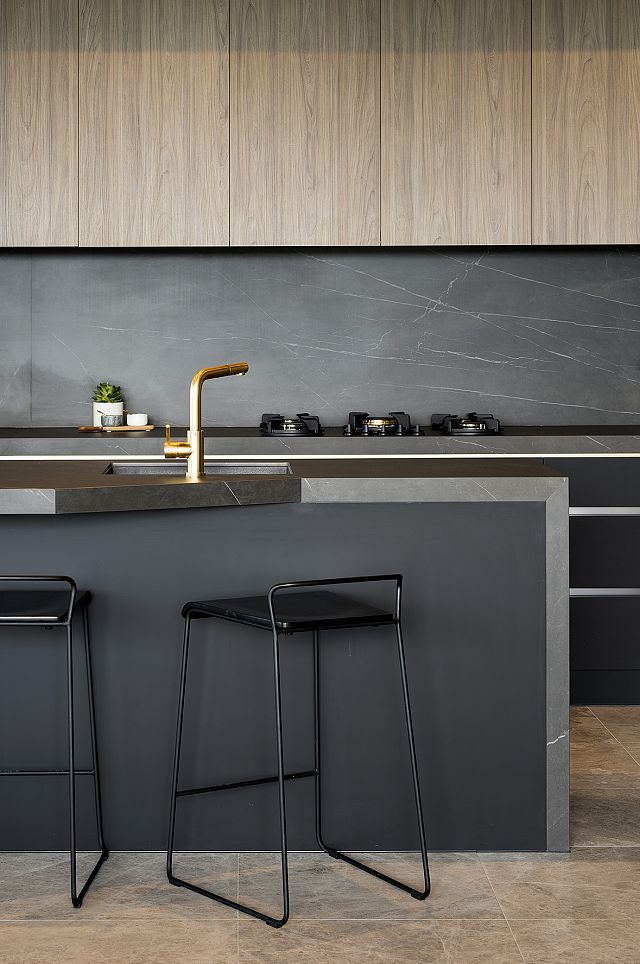
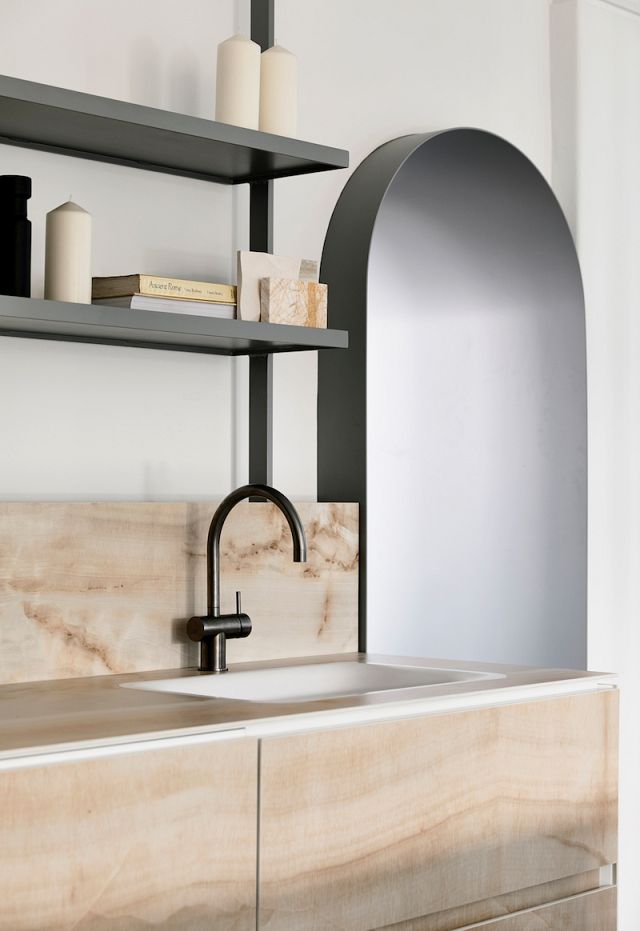
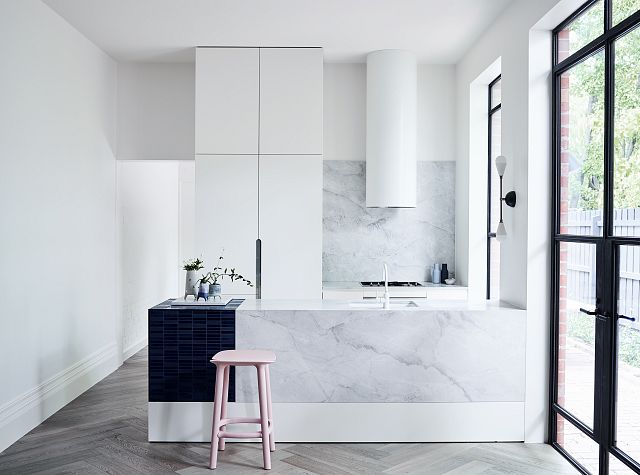



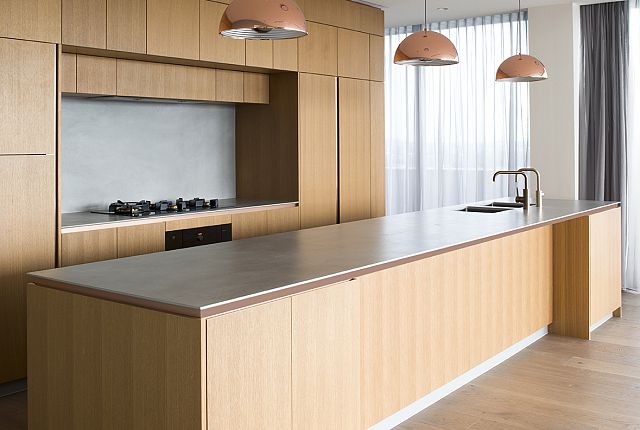

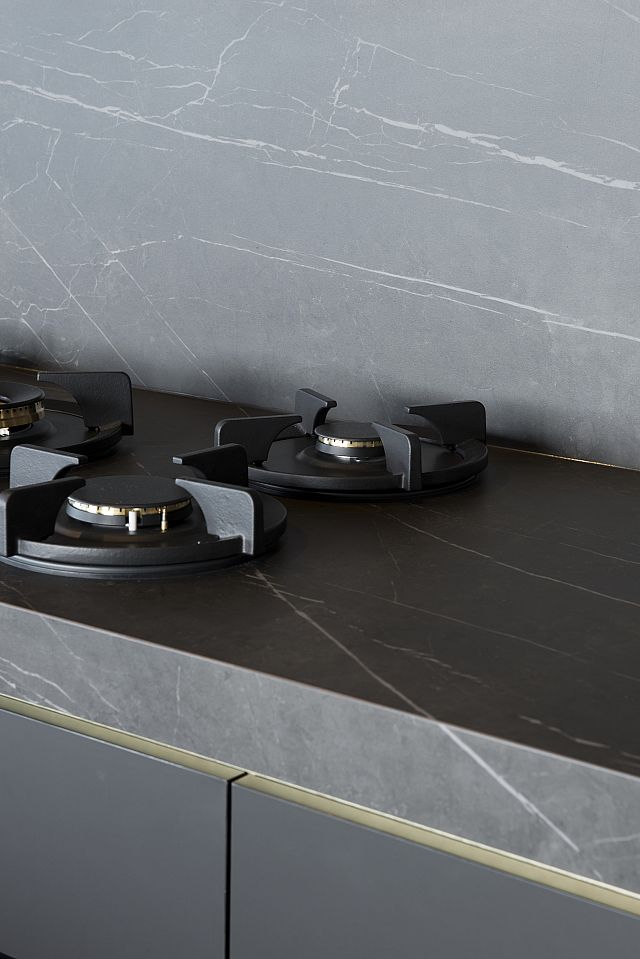
The problems with Caesarstone, engineered stone and reconstituted stone
While Caesarstone is a specific brand, you’ll see the name used interchangeably with “engineered stone” and “reconstituted stone”. These terms all refer to the same kind of material – typically 90-95% stone powder, bound together by petrochemical resin. Incredibly, almost half of the new benchtops installed in Australia are made from it, but we suspect that many people who choose the material aren’t fully aware of its properties.
On a purely pragmatic level, engineered stone just isn’t very robust – drop something heavy on your benchtop, and the surface will likely chip on impact; it’s not UV-stable, so will change colour with exposure to direct sunlight (not great for modern kitchens designed for connection with the outdoors); it’s not recommended for installation close to heat sources, making it unsuitable for splashbacks; and while it doesn’t stain easily, it’s not completely nonporous, so will stain if the wrong liquid is left on it for too long.
And then there are the problems that stem from its chemical composition – engineered stone gives off toxic fumes when it burns; and prolonged exposure to the dust produced when it’s cut, sanded, ground or polished, is considered a risk factor for the development of silicosis, and other serious medical conditions. These issues might not have an impact on end users, but they’re concerning nonetheless.
As you can see, it’s worth exploring other options.
Natural Stone – limestone, marble, granite and quartzite
Natural stone benchtops can add a strong sense of authenticity to a kitchen, with different stones bringing their own aesthetic qualities and physical properties. Limestone, marble, granite and quartzite get progressively stronger in that order, and the choice between them is often determined in a trade-off between desired look and feel, and longevity.
All natural stone products intended for use in the kitchen are sealed, to mitigate the risk of staining and acid attack, but spilt liquids such as lemon juice, wine or vinegar should still be cleaned up as quickly as possible, to avoid discolouration and etching of the honed surface. The good news is that stains on natural stone generally fade over time, and even acid etching, which isn’t as noticeable on lighter surfaces, can be polished out.
Marble has long been considered the king of natural stone, and for good reason – marble products like Artedomus’s Elba stone are incredibly strong, and display natural markings that make for striking interior design elements. Granite has also been popular for a long time, and it’s certainly a very robust material, but it’s slowly falling out of favour, a victim of fashion as much as anything more tangible. At the same time, quartzite, the strongest of all of the natural stone benchtop materials, has risen in prominence, with unique products like Artedomus’s Smeraldo offering a vibrant green colouring that rivals the beauty of marble.
For more information, read our Quick guide to natural stone, and how to choose the right one or How to care for natural stone surfaces.
Porcelain Panels – the strongest benchtop of all
The newest and arguably most impressive benchtop material on the market is porcelain panels, and when you compare it to Caesarstone, in particular, its growing popularity is no surprise. Made from all-natural pressed porcelain and available in
large-format slabs, it’s practically impervious to damage, doesn’t stain and doesn’t etch, and is completely UV stable, so can even be used outdoors. And because it’s so strong, it can be produced in thinner profiles than other benchtops – 6mm and 12mm, as compared to the standard 20mm. This makes it perfect for modern design treatments, and light enough for vertical applications like splashbacks and wall cladding.
Aesthetically, it’s a beautiful, pure surface material, but it’s also versatile, coming in styles that recreate the look of a wide range of materials, such as raw concrete, Calacatta, Statuario, onyx and other natural stone. One great example, MAXIMUM Marquina, replicates the beautiful white-in-black markings of Nero Marquina, a natural stone that itself can’t be used for benchtops, because its dark surfaces turn white with etching. For so many years, homeowners and interior designers have wanted to achieve the look of this beautiful material in the kitchen, and now they can, with the added benefit of porcelain’s incredible durability. And because MAXIMUM Marquina comes in a perfectly honed finish, it feels just like natural stone too.
But the benefits of a porcelain panel benchtop go beyond its surface. In contrast to the petrochemical binders used to make engineered stone, pressed porcelain is made from all-natural ingredients – clay, sand and quartz – that are heated and mixed. In the unfortunate case of fire, no toxic fumes are produced, because the panels are non-combustible.
Considering these fundamental differences between engineered stone, natural stone and porcelain panels, the popularity of Caesarstone is quite astonishing. But as awareness of products like Elba stone, Smeraldo and MAXIMUM Marquina grows, more and more architects, designers and homeowners are choosing them. Stronger, more beautiful, safer – there’s no argument, really.